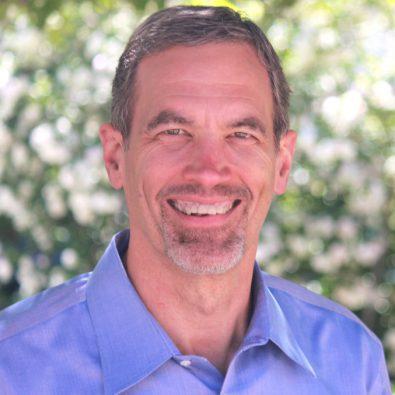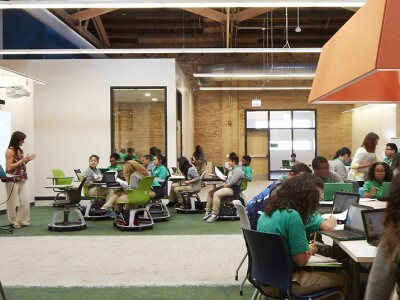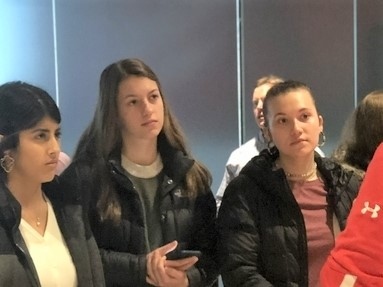What's All the Buzz About Detroit?
Topics

We’ve all had the experience of truly purposeful, authentic learning and know how valuable it is. Educators are taking the best of what we know about learning, student support, effective instruction, and interpersonal skill-building to completely reimagine schools so that students experience that kind of purposeful learning all day, every day.
Education in Detroit is coming out of the tailspin. There are some very good schools serving high need populations and it rivals the Bay Area for innovations in blended learning.
This post originally appeared on the Getting Smart blog at gettingsmart.com on April 30, 2013.
Hey, how about some good news from Detroit? As noted recently, education in Detroit is coming out of the tailspin. There are some very good schools serving high need populations and it rivals the Bay Area for innovations in blended learning.
Last week I toured schools and joined a CEE-Trust Blended Learning Summit (and today I’m back in Detroit headed for another innovative blended school, Nexus Academy of Lansing).
Cornerstone
With a long history in the independent school space, Cornerstone Charter Schools is a network of four growing blended schools with strong roots and capacity.
Winner of a Gates-funded Next Generation Learning Challenges grant (and discussed in an NGLC blog), Cornerstone Charter Health High School is a Carpe Diem-like flex model featuring Apex curriculum. In its first year the school serves about ninth graders. The health-focused school has a great relationship with the nearby medical center where many students will spend time in their last two years.
The high school is currently co-located with Madison-Carver Academy. They opened in a beautifully renovated and expanded elementary school in gritty northwest Detroit just south of 8 Mile Road.
The K-2 structure is a Rocketship-like lab rotation model. Intermediate grades feature a classroom rotation model. Both use Compass Odyssey content and MasteryConnect assessments running on Education Elements platform. There is no better opportunity to see three different well executed blended models under one roof.
Charters don’t get local funding, and state funding is low so the Cornerstone budget is tight (less than half of some of the east coast charters we studied at the Summit). They stay competitive for enrollment and employment with a powerful culture based on well-articulated values and embodied by a talented leadership team.
EAA Buzz
Equally impressive were the schools managed by the Education Achievement Authority (EAA). On each visit there was clear evidence of strong pedagogical vision, a powerful learning platform and great teaching in every classroom.
It’s important to remember that the EAA is doing disaster recovery work. They took over 15 schools that were in horrible physical, cultural and academic shape. The fact that the schools are clean, bright, sane, and safe is testament to heroic effort given the relatively low level of funding (some schools received SIG grants).
The core EAA innovation is a mastery-based student-centered learning system. Instructional units are the building blocks of the system. Each unit includes approximately three standards-based learning targets. For each unit, the Buzz learning platform—developed with Agilix—includes a variety of learning resources, application opportunities, and assessments.
Mary Esselman is the academic driver behind the innovation. I met this pedagogical tinkerer in Kansas City three years ago where she developed and piloted Buzz. When her boss John Covington took on the EAA challenge, they brought Buzz and student- centered learning to Detroit along with a couple great principals.
There are eight things I really like about Buzz:
- Ownership. Each unit includes a rich library of learning resources that give students learning pathways choices (units include content from Compass Learning, HMH, LearnZillion, Flocabulary as well as open and teacher created content).
- Application. Compared to competency-based systems where teachers tick off individual subskills, the Buzz units are big enough to allow interesting application projects.
- Evidence. Students must present three forms of evidence for each learning target—they have options in how they show what they know.
- Grading. The 1-4 grading system is the basis for the mastery-based system. Students must score a 3, proficient, in order to move to the next unit. Students scoring a 4, advanced, are eligible for peer coaching.
- Levels. The K-8 EAA schools and the Buzz platform are organized into 18 levels. Having twice as many levels as grades provides finer grained performance grouping. It also reduces the stigma for twelve year olds that are in Level 10 in ELA and Level 9 in math, for example. New students are placed in appropriate levels using adaptive tests from Scantron.
- Tracking. Student productivity is measured by the number of targets hit over an expected period of time and show on a speedometer on their desktop. Teachers can monitor the progress of all of their students at a glance. Some teachers display a project-tracking tool projected on an interactive white board to create a game-like leaderboard effect—a nice mixture of an individual progress model in a cohort environment.
- Motivation. The combination of student choice, engaging content, lots of feedback on performance and progress yields a motivating learning environment.
- Focus. Rather than focusing on lesson plans, teachers build and swap units—a bigger sequence of instruction, application, and assessment.
Buzz is as close to the merit badge idea I’ve been writing about for a couple years of anything I’ve seen. Still a work in progress, teachers quickly admit that they are “building the plane while flying it.”
The platform is really interesting, but the step-function improvement in results that will be widely evident at most EAA schools at the end of the year will be a result of a coherent system that includes:
- High expectations and powerful performance-based culture.
- Pedagogical vision of a student-centered show-what-you-know learning system.
- Performance-based year round employment and a long student day and year.
- Student and teacher access to digital learning resources.
- Effective learning practices in every classroom every day.
- Relentless community engagement and outreach.
Like every other secondary school I visit, I’d like to see more writing across the curriculum. And while I appreciate the safety concerns, I’d still like to see take-home technology (or help with at-home technology for kids that need it…and Mary said that’s coming).
Angela Underwood, came from Kansas City as well. She’s the principal of Noland K-8 school (see NGLC profile). After filling over 30 dumpsters with garbage and junk, Angela found staffing the turnaround to be the real challenge. “It’s really hard work,” she said and the conditions in the old building can be pretty bad—hot in the summer, cold in the winter.
Like all EAA schools, they have a high percentage of first year teachers including many from Teach For America. Some veteran teachers take to the new system but many struggled with the student-centered model. Underwood has replaced 8 teachers at her school this year. She said they have learned to “screen for the learning facilitator mindset.”
Like students, teachers progress through four levels of mastery. EAA uses PD360 to provide online supports in areas including learning environment, building learning units, fostering student ownership and use of data. There is a learning coach in every school.
As noted last month, EAA benefited from a $10 million grant from the Broad Foundation. Excellent Schools Detroit is funded by Kellogg, Kresge, Skillman, McGregor, and United Way.
If it’s not clear to Lansing yet, the results posted by EAA schools will make the case for expanding their authority and investing in their capacity. Like Cornerstone, the EAA is doing work of national importance—and I’m glad that’s happening in Detroit.
Disclosures: Connections and Compass Learning are Getting Smart Advocacy Partners. MasteryConnect and LearnZillion are portfolio companies of Learn Capital where Tom is partner.




